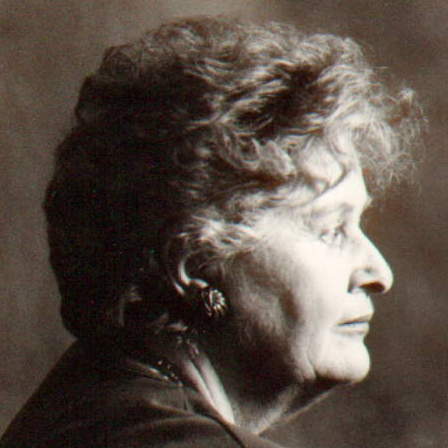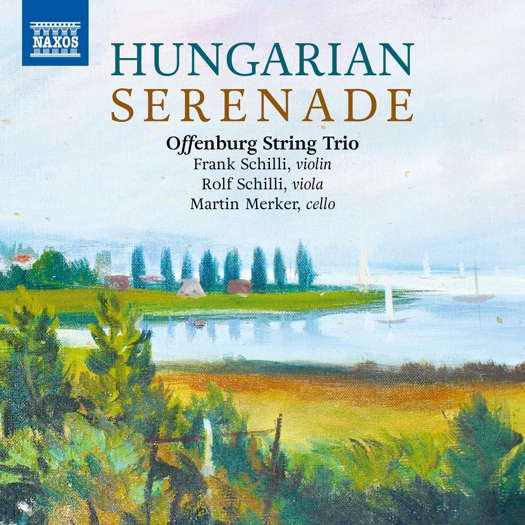- Nello Santi
- Jaap Schröder
- University of Miami
- Mendelssohn: Elijah
- Ahmed Adnan Saygun
- Peter Winter
- Caracas Sinfonietta
- Drake University
 SPONSORED: An Integral Part - Lindsey Wallis looks forward to the Canadian Music Centre's tribute concert to composer Roberta Stephen.
SPONSORED: An Integral Part - Lindsey Wallis looks forward to the Canadian Music Centre's tribute concert to composer Roberta Stephen.
All sponsored features >>
 DISCUSSION: What is a work? John Dante Prevedini leads a discussion about The performing artist as co-creator, including contributions from Halida Dinova, Yekaterina Lebedeva, Béla Hartmann, David Arditti and Stephen Francis Vasta.
DISCUSSION: What is a work? John Dante Prevedini leads a discussion about The performing artist as co-creator, including contributions from Halida Dinova, Yekaterina Lebedeva, Béla Hartmann, David Arditti and Stephen Francis Vasta.

An Inspiring Testament
Hungarian music played by the Offenburg String Trio, heard by GERALD FENECH
'Sensitive and engrossingly passionate performances ...'
In 1875 Franz Liszt founded the Royal Hungarian Music Academy. This institution quickly developed into one of Europe's foremost musical training facilities, and since 1925 it bears the name 'Franz Liszt Music Academy'. At the beginning of the twentieth century Béla Bartók and Zoltán Kodály started ushering in a new modern musical language and a renewal based on systematic studies of Hungarian folk music that had fallen into oblivion. This exciting CD focuses on works by composers belonging to the succeeding generation of Bartók and Kodály. It was not easy to make inroads in those terrible years, because composers of Jewish descent found themselves cruelly confronted with a growing anti-semitic tendency. Later their works were not allowed to be performed as they were regarded as 'degenerated art'. When the war ended in 1945, new restrictions were imposed, and whoever decided to stay in the country had to either comply with the rules imposed or emigrate.
Sándor Veress (1907-1992) was one of these composers, whose contribution to Hungarian music is being recognized only of late. In 1943 he was appointed as Kodály's successor at the Academy mentioned above. In 1949 he settled in Bern, and had a formative influence on subsequent generations of composers in Switzerland. The two dances for String Trio came about on a journey to Hungary in the 1970s. These are traditional folk dances from the former administrative region of Szatmár in the North-East of the country, and from Somogy, an area on the southern shores of Lake Balaton.
Listen — Sándor Veress: Szatmári Táncok for string trio
(track 1, 0:01-0:50) ℗ 2019 Naxos Deutschland GmbH :
The Sonatina for violin and cello probably originated in 1926/27 when he studied with Kodály. It was published in 2010, well after his death.
Géza Frid (1904-1989) was another Kodály student who, after he finished his studies, had to flee from Hungary. He settled in Holland where he miraculously evaded detention and deportation. Indeed, the Netherlands was to become his new homeland. The String Trio was the composer's exam piece and it left a deep impression on Kodály. Written in 1926, the work was considered by the master as ripe for publication, and Frid was also highly satisfied with what he had accomplished. This is what he had to say about this Trio: 'This 3-part piece includes many typical elements of Hungarian folklore. This applies particularly to the third part in which an original folk melody is cited in its entirety and determines the subsequent thematic material. However, this is not surprising because at that time I was a student of Bartók and Kodály and obsessed by Hungarian folklore. So I have actively participated in the treasure hunt for folk songs in the countryside.'
Listen — Géza Frid: Andante cantabile (String Trio, Op 1)
(track 3, 0:00-0:40) ℗ 2019 Naxos Deutschland GmbH :
Ferenc Farkas (1905-2000) is, most probably, one of the most productive and adventuresome Hungarian composers of the twentieth century. He wrote in practically every genre, and his chamber pieces are among the most significant compositions in his musical catalogue. In a speech in Vienna in 1967 this is what Farkas said concerning folk music: 'Equipped with an old-fashioned phonograph I went off into the countryside to be together with the farmers and diligently collected folk melodies. One cannot compare the immediate experience of the chanted songs with the printed musical notation. There was so much to be learned!' The result of these musical field studies form the basis of Notturno, Op 2, a short but highly impressive work full of intense moments.
This is what the famous cellist János Starker had to say about László Weiner (1916-1944): 'With him we lost an outstandingly talented personality who deserves all endeavours to remember his works'. Weiner finished his studies with Kodály in 1941. A few months after his marriage to mezzo-soprano Vera Rózsa he was deported and died in unknown circumstances in the forced labour camp of Łuków. His earliest preserved work, the Serenade on this recording, composed in the summer of 1938, not only distinguishes itself by its outstanding compositional technique, but is also a prime example of a poetic tonal language.
Listen — László Weiner: Allegro (Serenade)
(track 12, 0:00-0:54) ℗ 2019 Naxos Deutschland GmbH :
Rezsö Kókai (1906-1962) was a targeted person in Communist Hungary, and labelled as 'politically suspicious'. This severely affected his great compositional gifts. In 1933 he received his doctorate in music science from Freiburg University in Breisgau (Germany). After the war, he worked for Hungarian radio, but still continued to compose. In his Serenade for String Trio, the composer managed to form an impressive symbolic relationship between elements of Hungarian folk music and an enhanced harmonic language that has its roots in Romanticism.
Listen — Rezsö Kókai: Allegro moderato, quasi tempo giusto (Serenade)
(track 16, 3:17-4:17) ℗ 2019 Naxos Deutschland GmbH :
This issue is not just music for its own sake, but an inspiring testament that, despite adversity, injustice and cruelty, man's indomitable spirit of courage always triumphs in the end. Sensitive and engrossingly passionate performances, coupled with some excellent sonics, complete a disc that is certainly not for the squeamish, but deeply rewarding for those who are inclined to search for the meaning behind the notes.
Copyright © 7 July 2021
Gerald Fenech,
Gzira, Malta

CD INFORMATION: HUNGARIAN SERENADE - OFFENBURG STRING TRIO
MORE CLASSICAL MUSIC ARTICLES ABOUT HUNGARY


